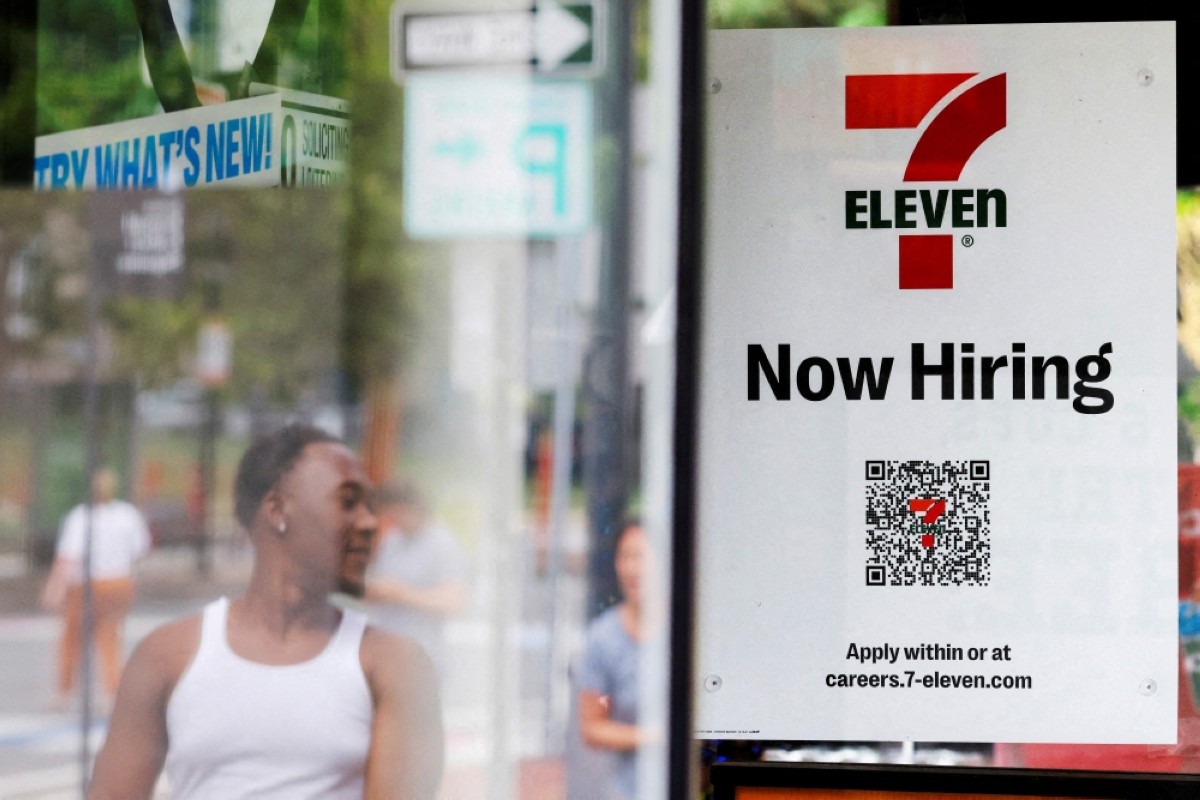US weekly jobless claims rise, trade deficit widens
WASHINGTON: The number of Americans filing new claims for unemployment benefits increased last week and unit labor costs rose by less than previously thought in the first quarter, indicating the labor market is cooling but not enough to allay the Federal Reserve’s hesitance to begin cutting interest rates.

A 7-Eleven convenience store has a sign in the window reading "Now Hiring" in Cambridge, Massachusetts. – Reuters.
Initial claims for state unemployment benefits rose 8,000 to a seasonally adjusted 229,000 for the week ended June 1, the Labor Department said on Thursday. Economists polled by Reuters had forecast 220,000 claims in the latest week. The labor market has been steadily rebalancing back toward pre-pandemic levels after the Fed raised interest rates by roughly 525 basis points since March 2022 to slow demand in the overall economy.
The so-called continuing claims tracking those who collect benefits beyond the first week increased 2,000 to a seasonally adjusted 1.792 million during the week ending May 25.
Meanwhile, the US trade deficit expanded slightly less than analysts expected in April, to the widest since late 2022, as imports rose more quickly than exports, according to government data released Thursday. The overall gap was $74.6 billion, growing from March’s revised $68.6 billion figure, said the Commerce Department. This was the largest deficit since October 2022, according to official data. US consumption has been more resilient than anticipated even as the central bank rapidly hiked interest rates to dampen demand - and this has helped to support imports.
But with weaker global demand, there have been concerns that export growth would not be able to keep up. “The level (of weekly jobless claims) remains in a range that suggests the labor market remains tight,” said Thomas Simons, US economist at Jefferies. “Continuing claims are still very low by any historical standard, and we still see the data as supporting the notion that people who lose a job are able to find a new one with relative ease.”
Data earlier this week showed US job openings in April fell more than expected and the number of available jobs per job-seeker reached its lowest level since June 2021.
Earlier on Thursday, US employers announced the fewest job cuts last month since December and layoff announcements so far in 2024 are running behind last year’s pace, according to data from outplacement firm Challenger, Gray and Christmas. Employers announced 63,816 cuts in May, a 1.5 percent decrease from the 64,789 cuts announced in April and down about 20 percent from the 80,089 cuts announced a year earlier. Year-to-date layoff announcements are 7.6 percent lower than in the first five months of 2023.
US worker productivity grew slightly less than previously estimated in the first quarter but exceeded market expectations, and unit labor costs rose by less than first thought, data from the Labor Department also showed on Thursday. Nonfarm productivity, which measures hourly output per worker, increased at a 0.2 percent annualized rate in the first quarter, revised down from an initial estimate of 0.3 percent one month ago.
Economists polled by Reuters had estimated a revision down to 0.1 percent. Unit labor costs rose at a 4.0 percent annualized rate, down from the first estimate of 4.7 percent. Economists had projected labor costs to be revised up to 4.9 percent.
Productivity accelerated and labor costs were subdued through much of 2023, ending at 3.5 percent and unchanged, respectively, in the fourth quarter. At the time, that had been seen as one of the arguments favoring Fed rate cuts in 2024 as it was hoped improved worker efficiency would dampen inflation. — Agencies.











